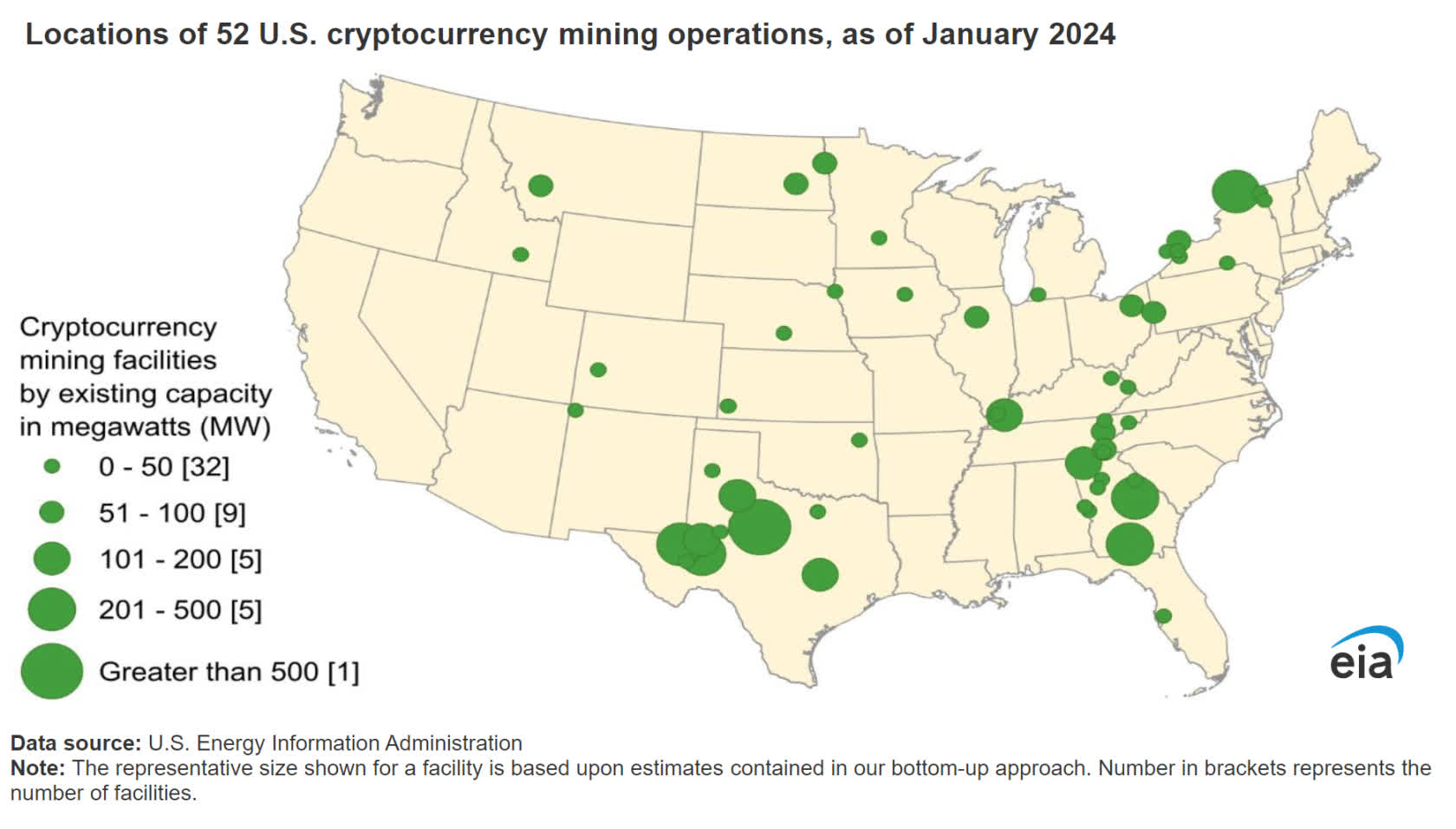In a nutshell: Following a crackdown in China in 2021, cryptomining has boomed in the US and, according to the Energy Information Administration, could now be responsible for as much as 2.3% of the country's total energy consumption.
Cryptocurrency mining in the US is nothing new, having been around for about 10 years, but since 2021 the size of the industry has ballooned so much that current estimates show that cryptomining is using between 0.6% to 2.3% of the US' annual energy consumption.
The Energy Information Administration (EIA) published analysis on Thursday which looks at cryptomining operations across the nation and their impact on the electricity grid. The EIA used both 'top-down' and 'bottom-up' approaches in its estimations – top-down in that they used data from Cambridge Centre for Alternative Finance (CCAF) estimates for mining activity at local and global levels, and bottom-up by going direct to known mining operators and sourcing information on their energy use.
The top-down approach yields quite a wide range because it is based on a few assumptions. First, the method looks at data from the Cambridge Bitcoin Electricity Consumption Index (CBECI) for total global usage. This method gives an estimated range because power consumption is not consistent; it ramps up or down based on local price fluctuations so as to remain maximally profitable, so the total electricity usage is given as upper and lower theoretical boundaries. These boundaries are then combined with the US' current share in the cryptomining market, which CCAF puts at 38%. Combining these data points yields the 0.6% to 2.3% range.
The bottom-up approach gives a similar figure. The EIA used data it holds to identify and contact 137 known mining operators across the United States, of which 101 responded to their enquiries. Those responses gave figures for maximum output which added up to 10,275 megawatts (MW). Take that number and compare it against the US' average annual use of 450,000MW and you get about 2.3%; at the high end of the EIA's top-down measure.
If those numbers feel a bit esoteric to you, consider that even the bottom end of the estimated range would equate to adding another Utah or West Virginia to the grid. In terms of energy consumption, cryptocurrency mining is its own state.
Such enormous consumption, and the relatively short time it's taken to ramp up to these levels, is cause for concern for policymakers and grid managers. CCAF estimates assert that the US was home to around 3% of global crypto mining in 2020, but that figure is now around 38%. Further increases could start to weigh heavily on efforts to keep energy prices low and to decarbonize the grid, as well as the wider economy.

